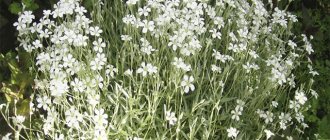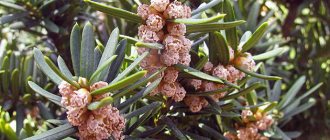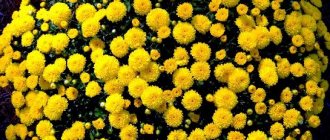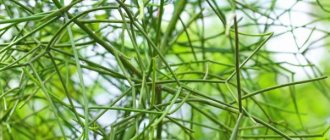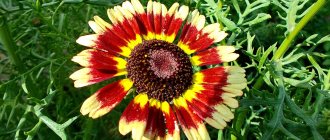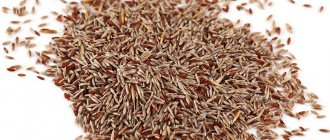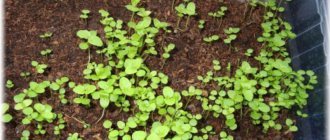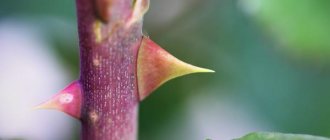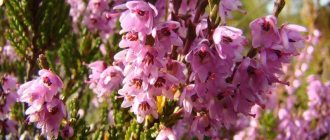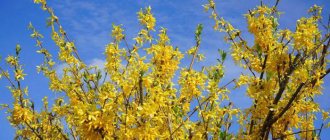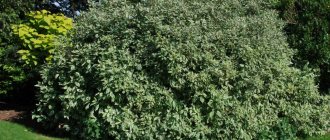Description
Cerastium (Latin name Cerastium ) is a creeping ground cover plant. There are about two hundred plant species, but only a small number are actively grown.
The stems of the plant are erect or ascending. Sometimes there are bare stems, but more often they are still pubescent. White flowers are usually double-cut, but you can also see one-third cut petals. The fruit of the flower is an oblong capsule with brown, round, kidney-shaped seeds.
In our latitudes, growing chickweed is common, but this mainly applies to five varieties.
Growing parsley from seeds
Osteospermum, choose an annual or perennial crop.
In general, experts advise, if possible, to grow and propagate the plant by cuttings or rooting sprouts. With seeds, the situation is a little worse - they germinate poorly, and the process of growing seedlings from seeds takes a lot of time. After the flower has matured, its seeds are collected. It is recommended to sow them in early spring, when the soil has more or less warmed up; you can also place new seedlings from seeds in a greenhouse. Then the germination process will take only two to three weeks. When sowing and planting a grown chickweed, keep a distance between bushes of at least five centimeters. When planting on open ground, the distance should be even greater - 24-30 centimeters. In April and November, you can plant seeds directly in open ground, without pre-treatment. The cherry blossom begins to bloom only after two years, so we recommend that you be patient.
Felt cleaver
Tomentosa is a herbaceous flowering plant of the Carnation family. As a rule, it differs from other members of the family in having felt or coniferous leaves. The flower has a rather short stature and is distributed in the mountainous regions of Europe. The leaves and stems have a silver-gray tint, and the flowers are star-shaped with white petals 15 mm in diameter. Felt lily can bloom at any time of the year. It has gained popularity as a cultivated ornamental plant and can be found in gardens around the world.
Bieberstein splinter
Bieberstein's parsley blooms in early spring. This is a herbaceous plant with a lot of fluff. The trunk of the plant can reach 20 centimeters in height. A very not picky flower that is resistant to drought and requires constant access to light. You will have to constantly remove shoots, as the flower grows at an incredible speed.
Jaskolka snow carpet
The snow carpet blooms at the beginning of summer and forms a unique silvery, so-called “carpet” in your garden plot. This is a spectacle worth seeing. The approximate height of this variety is at least twenty centimeters. This is the most popular ornamental plant among representatives of this family, which is confirmed by numerous fans among professional and amateur gardeners.
Field jasper
Parsley arvensis is one of the species of flowering plants in the Carnation family. This widespread species is native to Europe and North America, as well as parts of South America. This is a very changeable species. There are several subspecies, but the number and defining characteristics are constantly disputed by botanists. Grows from 30 to 45 centimeters. Can take the form of a mat. A clump, a vine, or just a vertical plant. It grows from both a taproot and an intricate system of rhizomes. Usually the flower is slightly hairy in texture, often the hairs are glandular. The leaves are linear, spear-shaped and oblong. The inflorescence may consist of one flower or a dense cluster of several. The flower has five white petals with two lobes each and five green sepals at the very base. The fruit is a capsule measuring up to one and a half centimeters in length with ten tiny teeth at the end. Contains several brown seeds.
White jasmine
The white sparrow grows as quickly as its relatives in the family. It can be 60 or more centimeters in length. A very lush bush is given a special charm by its snow-white color - white flowers and silvery leaves. Gardeners recommend stirring the plant on sandy soil and don’t be afraid, constantly give it access to light - the jasmine loves this very much.
103583
Crop varieties
Flowers vary depending on the variety. It is worth telling in more detail about the most popular varieties.
Felt cleaver
The stems of the flower are branched, gray felt, they form pillows reaching a height of 30 cm. And these pillows are twice as large in diameter. The leaves are linear-lanceolate, small. The flowers are white, usually no more than 1 cm in diameter.
The plant blooms in May, no more than 35 days. The felt variety does not grow, so the flower is usually not planted on alpine hills. This is a winter-hardy plant, but winter-spring waters are dangerous for it.
Bieberstein splinter
The densely pubescent plant with a characteristic gray color also forms dense cushions. The shoots spread, and the flower stalks rise up to 20 cm in height. The leaves are small, sessile, linear. There are also oblong-linear ones. The flowers of the plant are also white, but slightly larger than those of the felt plant. The petals are dissected into two lobes at the top.
This sprout blooms in late May - early June, the flowering period does not exceed 30 days . Winter-hardy plant.
alpine jasmine
It reaches a height of 15 cm. Its stems are highly branched, the leaves are ovoid in shape and silver-green in color. White flowers can reach 2 cm in diameter. Flowering begins in May, the usual period is 20-30 days. This variety bears fruit abundantly. It does not like overheating in the soil, nor does it like stagnant water. In a snowless winter it may die.
Purple parsley
It can reach a height of 25 cm. The leaves are small, lanceolate or oblong. White flowers are collected in umbrellas. Flowering occurs in June.
Grandiflora grandiflora
It differs in that the diameter of the flowers reaches 3 cm. Flowering later - July-August. The height of the plant does not exceed 20 cm.
Landing
Planting includes a preparatory stage, which consists of adding about five kg of organic fertilizers per 1 sq.m. to the soil. The flower does not take root well in heavy soils that do not contain sand. This deficiency can be compensated for by adding coarse sand to the soil. The soil is cultivated 20 cm deep. It is advisable to carry out activities at least 2 weeks before the planned planting, and preferably 4 weeks.
Before planting, the soil should be dug up to about 18-20 cm. The seedlings are planted in separate holes, the depth of each is equal to the size of the root. There should be about thirty cm between the bushes. In order for the sprout to take root, it must be watered regularly.
Felt cleaver
Planting and caring for the plant
Planting a crop is not a complicated process, but choosing the soil requires observing certain nuances. The ideal choice is sandy loam, well-drained, loose soil. In order for a flower to grow and develop normally, the space allocated to it should not be less than 30 cm in diameter.
Before planting, the soil needs to be loosened; if it is clayey, add sand. The land is usually not fertilized.
The best method of propagation is seedlings. Seeds should be sown in a container with drained soil. This is usually done at the end of April. Caring for seedlings involves watering the seeds 3 times a week.
If the seeds are planted correctly, then after 2 weeks you will be able to see the first shoots. The optimal temperature is 21-23 degrees. It happens that the seedlings are weak, then they require planting in picking cups.
Experts advise growing seeds in February for seedlings, but the method of planting seed directly into the soil in the spring is also popular.
Plant care is as follows:
- regular infrequent watering (once a week);
- after flowering, flowering stems need to be shortened;
- To prevent the overgrown clump from becoming bare, it needs to be trimmed after flowering (in the photo you can see examples of carefully trimming the plant).
In winter, waterlogging of the soil should not be allowed; this is the necessary care, without which the plant will simply die. The flower loves bright light, but also takes root in partial shade. But growing in twilight will not allow the flower to grow.
No care is required in terms of weeding - the plant has reliable protection: its thickets literally absorb its neighbor. For this reason, the flower is not planted next to delicate, fragile plants.
How does the moth reproduce?
In general, there are two methods of propagation - from seeds and by dividing the bush. Of course, an experienced grower should know both methods in order to be able to do exactly what is needed in a particular situation.
Can grow literally everywhere
Growing from seeds
This method is more popular - seeds can be easily bought in a store or ordered online. In addition, they can easily be stored for several months and even years without losing their germination.
Planting in the ground can take place either at the end of April, when the ground has already dried out and warmed up sufficiently, or at the end of October, shortly before the cold temperature sets in.
For reference! You can also use seedlings - this is more troublesome, but allows you to admire the flowers two years after planting.
In any case, the plant will bloom only in the third year.
The seeds need to be filled with warm water tinted with potassium permanganate for disinfection. Those that float can be thrown away immediately - they will not germinate.
In the first weeks of life, it is very important to protect the plantings from direct sunlight - you can stretch transparent polyethylene. If you don’t do this, the bright May sun will simply dry out the small leaves and the plant will die.
Combination of yoke with other colors
The main requirement for the seedling's neighbors is that they must have drought-resistant flowers. Since the plant itself has a neutral white color, it is not so difficult to find a neighbor.
Dark-leafed bells and armerias are ideal partners for the carrion. In addition, this flower is in harmony with:
- cornflowers;
- daffodils;
- tulips;
- hyacinths.
There is no need to create a composition that is too variegated - flowers of delicate shades or the same color scheme (for example, lilac) will look best with a sparkle.
Use in landscape design
Flower growers love the so-called snowy, almost weightless carpet with which it lines the ground. If you need to refresh your flowerbed, add lightness and tenderness to the space, choosing this flower crop is optimal.
In landscape design, a flower can be used as follows:
- Snow-white bushes will decorate the front of any flower garden.
- Planting near curbs is also encouraged.
- Slopes and not very aesthetic boulders are often shaded by this particular plant; it masks the imperfections of the landscape.
- Flowers look great in gazebo baskets. They will also decorate the pots that are displayed on the terraces.
- Often the soil under trees is decorated with a jar. Snow-white bushes grow, forming the most delicate clearing.
If you decide to decorate your garden with an alpine slide, the rules for the formation of which we have already talked about, then we recommend using an air bowl to dilute and refresh the stone inaccessibility of the composition.
Required care
Growing alyssum: when and how to plant it from seeds
Why do gardeners love this plant so much? Planting and caring for Bieberstein, as well as other species, is very simple, so even beginners in the field of floriculture can do it. The main thing in care is watering, which will need to be done once every 7 days. Sometimes you will need to loosen the soil. If the flower grows excessively, you can remove unnecessary stems.
Many varieties are characterized by frost resistance. For the rest, additional shelter will need to be created to help them survive the colder times. To do this, the plants are covered with peat or spruce branches; the stems must be trimmed to 1 cm in advance.
According to many gardeners, the plant does not particularly need any feeding, but some believe that fertilizers are still needed so that the flower grows faster and blooms more luxuriantly. It is necessary to fertilize after the plant is planted and also when it begins to bloom.
Reproduction methods
The jasper is not a whimsical plant; propagating it is also not difficult. To carry out the process, you can use methods suitable for propagating all perennials:
- Cuttings. It is better to do the procedure in the spring, when flower stalks have not yet formed. You can begin propagation in the fall, when the plant has completely faded. Cut the shoots and root them in the garden. Make shelter in the form of caps.
- Dividing the bush. When early spring arrives, the bushes begin to slowly grow. At this time, the plants are dug up and divided into a couple of parts, after which they are planted separately from one another.
If you plan to propagate the seedling by cuttings, then, according to gardeners, it is better to do this in June than in the fall, since this turns out to be more effective.
Presence of diseases and pests
The moth is simple in everything, even diseases and pests practically do not affect it. Only sometimes can a plant suffer from a fungal infection, but this happens if the bush is not taken care of at all or is over-moistened.
It is important to periodically trim wilted stems. Thanks to this, the plant will look more compact and well-groomed.
Also, such a procedure can increase the plant’s immunity and resistance to diseases.
Caring for the weed (video)
The most inventive flower growers make unusual compositions from the tree: they form the faces of animals, make a “cloud” from the tree, on which other flowers “travel”. True, with this approach, constant correction of flower bushes is necessary.
The cherry blossom has many fans, which is understandable - the flower is unpretentious, good-looking and serves as a neutral background for many flower arrangements. Such a blanket of snow will invariably please the eye, and its simplicity and fragility only decorate the flower.
Beautiful flowering on your site!
